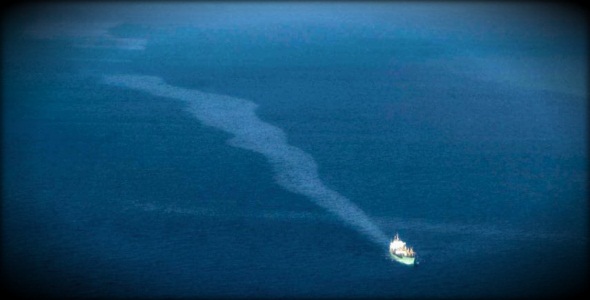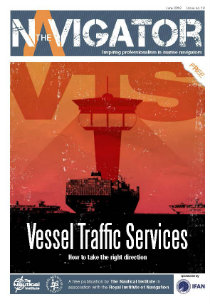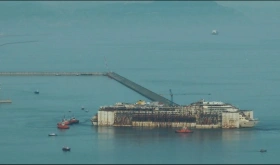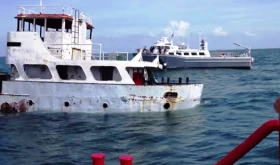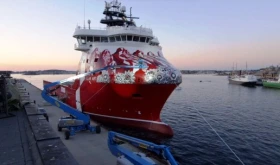This incident information refers to loss of main electrical power onboard a bulk carrier and while at sea. The vessel had completed heavy weather preparations on deck, when she approached a forecasted storm with force 8-9 and waves up to 7 metres. Shortly after running into the storm the fire alarm sounded, a black out occurred and the main engine stopped.
Selecting and Using ECDIS
ECDIS is nothing more than a computer based navigation system that complies with IMO regulations and can be used as an alternative to paper navigation charts. Integrating a variety of real time information, ECDIS is an automated decision aid, capable of continuously determining a vessel’s position in relation to land, charted objects, navigation aids and unseen hazards.
Paris MoU Detention Report for Chemical Tanker MT Gorgonilla
During a voyage of M/V Gorgonilla from Gibraltar via the Kiel Canal to Kalundborg, after passing the locks in Brunsbüttel there was a blackout and a shutdown of the main engine. The vessel went alongside in Brunsbüttel 08.02.2010. The ships crew announced the very poor technical condition of the ship and asked for help and support. On the same day an overriding PSC inspection has been carried out.
Corrosion / Pitting on Ship’s Side
This incident information refer to to heavy corrosion/pitting and subsequent cracking that was discovered in the side shell plating and frames of an old bulk carrier at sea, in ballast condition. The damage was found in way of the pipes connecting the hopper tanks and the top side tanks in cargo hold no. 4.
Best Practices in Recent Loss Prevention Incidents
The following presentation/article makes a brief review of best practices in loss prevention that have been collected from some of the recent UK P&I Club loss prevention bulletins, hence a UK P&I Club miscellany.
Arctic Facilities Design and Operation
The following information is an extract from PEW recommendations on Arctic Oil Spill Prevention, Response, and Safety in the U.S. Arctic Ocean published during September 2013. Once exploration drilling is complete and sufficient oil and/or gas resources are found to support year-round production, a more permanent offshore production facility may be installed with a pipeline connecting it to shore. Offshore production facilities typically include development drilling operations, wellheads, processing facilities, storage, and living quarters.
Reasons Illegal Discharges from Ships Occur
Whether an illegal discharge is due to negligence (such as poor maintenance of equipment) or is deliberate (even actively promoted by the company), it is usually the result of action/inaction both on the part of ship operators, and of ship master and crew. On some occasions, violations of pollution regulations may result from lack of awareness by operators and crew. Deliberate illegal discharges occur due to a conjunction of two factors: 1) there are economic advantages for ship operators; 2) there is a low risk of being caught and penalised. Motivations for the individual crew members are slightly different; these are less likely to include cost savings, but may be based on an intention to follow perceived instructions (often implied rather than explicit) and/or fear of losing a job. The following information are an extract from EMSA’s “Addressing Illegal Discharges in the Marine Environment” publication.
Incident Information on Grooving Corrosion on Ship’s Side
During a loaded voyage of a bulk carrier it was discovered that water had entered into the double bottom tank No.4, amidships. After inspection it was found that the water was coming through the ship’s side via the access trunk from the top wing tank and then to the double bottom ballast tank. The ingress water was estimated to be approximately 300 cubic meters per hour. Fortunately, the leak was limited to the double bottom ballast tank and the ballast pumps were able to keep the tank empty until the crack could be dealt with.
Paris MoU Detention Report for Bulk Carrier MV Ioanna G
The M/V IOANNA G was a 9640 GT bulk carrier built in 1978, adapted for carrying timber cargo on deck, flying the flag of Panama. The vessel called at Las Palmas (Canary Islands, Spain) port on April 3rd 2009 being eligible for an expanded inspection. The ship had no previous inspection records in the Paris MoU region. The first visit on board took place on April 6th 2009.
P&I Market Share for 2011 and 2012
More than 90% of the world’s oceangoing tonnage is insured by the mutual P&I Clubs that are members of the International Group of P&I Clubs (IG P&I Clubs). The results this year reveal that The Japan Ship Owners’ Mutual and the UK P&I Club continue to dominate the market with 12.09%, and 12.03% of the global fleet respectively. In addition, The North of England and Gard P&I Clubs have increased their overall market share and now have an almost equal share of the global fleet standing at around 10.3%.






